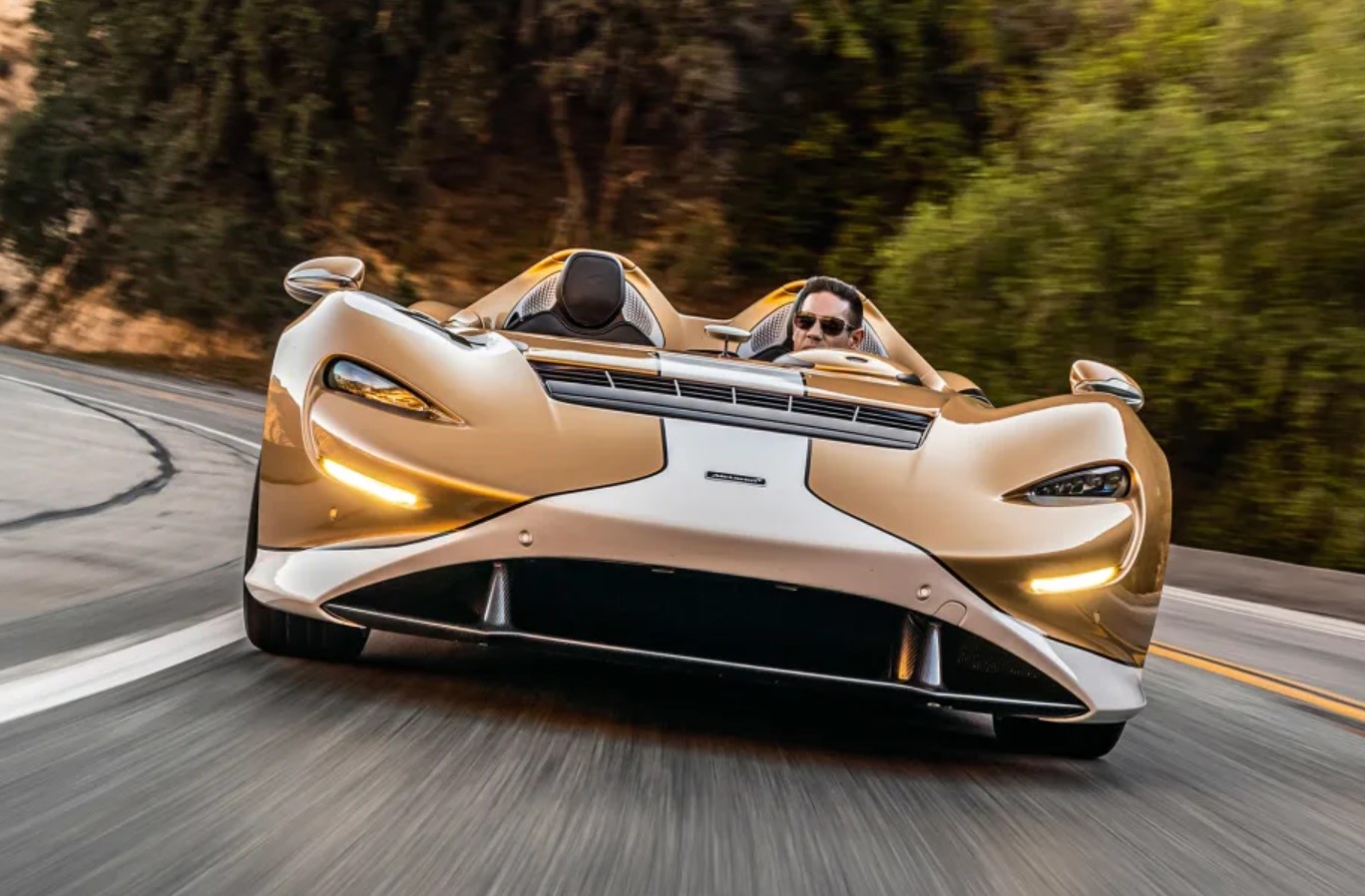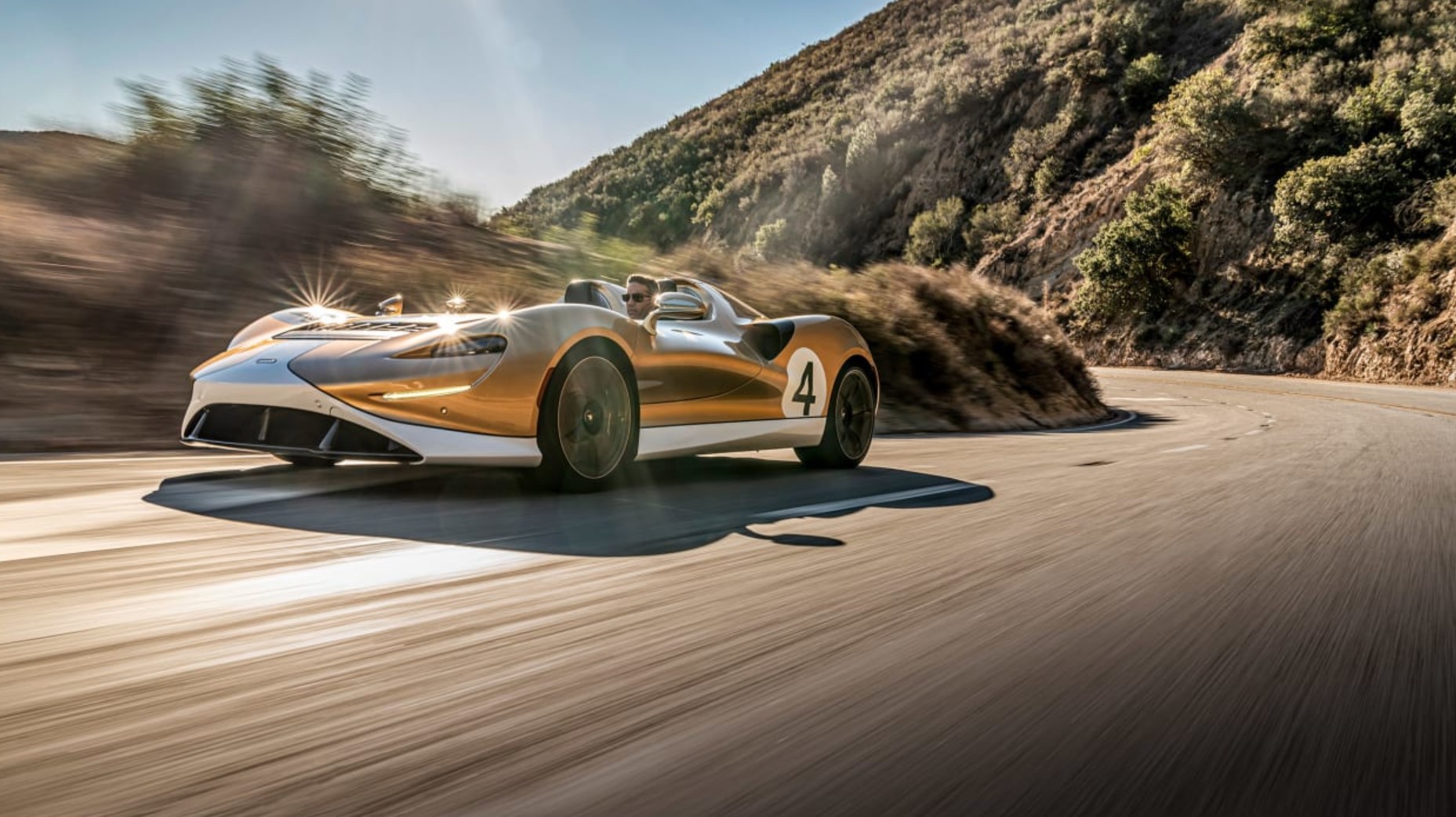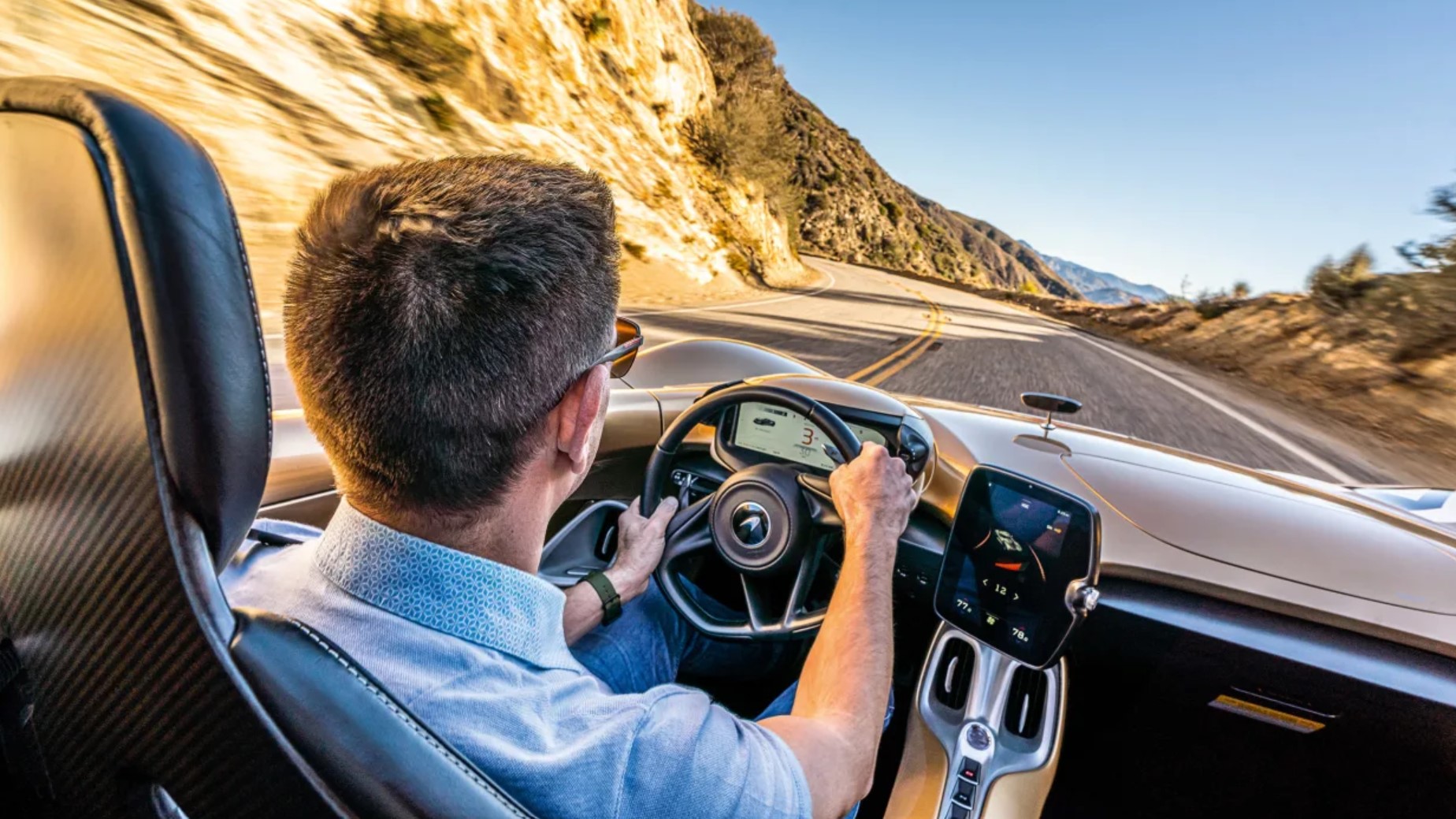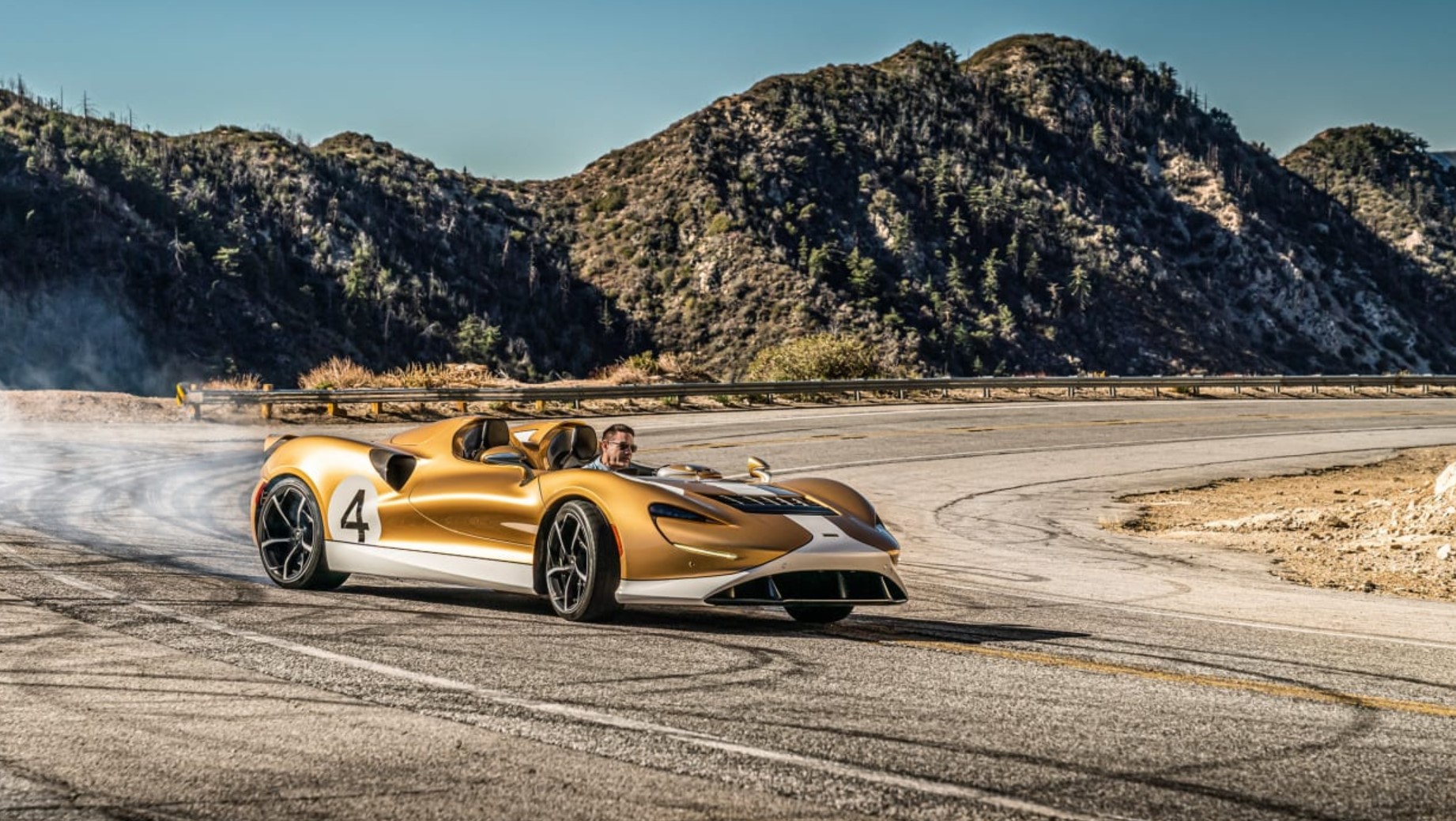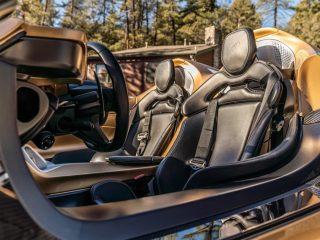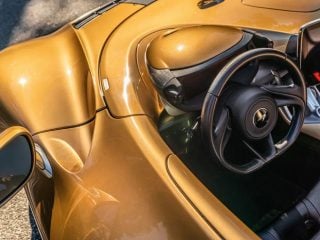The McLaren Elva generally equates to little more than a toy for collectors, but it doesn’t stop it offering an exhilarating driving experience.
The McLaren Elva is ascending into a cloudless sky for mile after mile through a never-ending sequence of long, third-gear corners. At times the gradient is steep as a curve opens out and the road climbs rapidly to the next long hairpin. Interspersed are flatter, meandering sections that follow spectacular ridgelines before the tarmac coils back in on itself and the climb resumes. The Elva doesn’t notice.
Whether its nose is pointing upwards or shovelling low along one of the flat sections, the acceleration is akin to freefall. My stomach is three corners back. Every time I pin the throttle to its stop it’s like the moment a rollercoaster hurtles over the big, heart-stopping drop. But there’s nothing to catch you at the bottom, so you just keep falling and falling until you run out of road or bravery. The Elva is stupidly, wonderfully, shockingly fast. The sort of fast to which your body can’t acclimatise. It never gets old.
The Elva is also, let’s face it, a very silly car indeed. Certain things about it are very easy to get on board with. For example, it’s McLaren Automotive’s lightest ever car, at 1148kg dry or 1269kg with fluids. The familiar 4.0-litre twin-turbocharged V8 has never been more powerful, either. With 591kW at 7500rpm and 800Nm at 5500rpm, the Elva has a power-to-weight ratio of 474kW per ton, which puts it ahead of the P1, the Senna and even the F1, the featherweight OG. McLaren claims the Elva can reach 100km/h in 2.8 seconds, 200km/h in 6.8 seconds and go on to hit a presumably rather breezy 327km/h. Good stuff.
The bad stuff? Well, there’s no escaping that it’s a car that has no windscreen. And not in an Ariel Atom or Caterham sort of way. It’s not an intrinsic part of a back-to-basics sports car – the Elva is spun from a platform that has spawned many coupes and spiders – rather it’s one of those ‘collector’ models with no windscreen that are meant to be more visceral and exciting but can’t help feeling contrived and a bit naff. The Elva, like Ferrari’s Monza SP1 and SP2 and Aston Martin’s V12 Speedster, is created for those so rich, so bored and so ludicrously in need of attention that they’ll happily put up with being pelted by gravel because, well, they’re the lucky ones who can afford it. Just 149 Elvas will be produced at a price starting at £1.4million (AUD$2.46m) each.
Perhaps you can tell I’m a little bit cynical about these sorts of cars. Even so, I’ll admit that when I started to delve into the story of the Elva it was more interesting from a technical and engineering point of view than I’d imagined. The name is inspired by Bruce McLaren’s Group 7 sportscars of the 1960s. Those lightweight, powerful prototypes with Oldsmobile V8 engines were basically forerunners to the Can-Am monsters to come, and production of customer cars was outsourced to Elva Cars of Sussex. Light, open-topped (with tiny aeroscreens) and featuring a massive power-to-weight ratio, the M1A, M1B and M1C were successful and wonderfully fit for purpose.
Jethro Bovington




